Create Your Own Display By Harvesting Bluebonnet Seeds
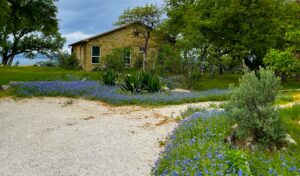
The showy blooms attract visitors of all types.
Our Texas state flower, the Bluebonnet (Lupinus texensis), is a low maintenance winter annual whose color is an early spring welcome and a reason for a Sunday drive. It’s now available in white, pink, classic blue, and royal blue. You might ask, how do you replicate the display of bluebonnets so prominent along the state highway? A little planning and effort right now will reward you next year, as you might notice the seed pods are currently ripening.
Let Your Bluebonnets Go To Seed
The first step in harvesting seeds is to allow your bluebonnets to form seed pods. So often, people mow the wilted flowers or throw them out before the plant has had time to set seed. The pods are a display of color all their own – initially appearing as a light fuzzy green growth after the blooms have faded away, sometimes 3 weeks or more after peak bloom. As the pods ripen, they will turn from light green, to goldish yellow, to light tan or cream, and finally to a darkened brown. Take as many trips to the bluebonnet patch as you desire to retrieve the pods as they ripen, since not all ripen at the same time. Remember you may want to allow some to open and blow away in the wind, distributing naturally. Each pod generates numerous seeds, so there is plenty to go around.
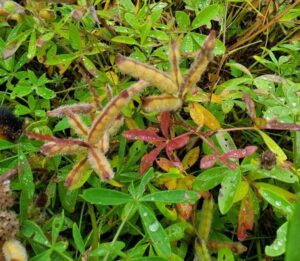 |
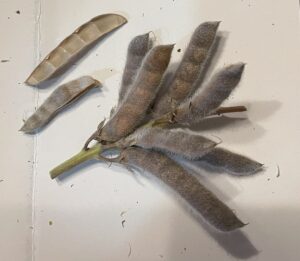 |
| Bluebonnet seed pods change color as they ripen. | |
Harvesting Texas Bluebonnet Seeds
Once you identify the brown pods, take a pair of scissors to cut the seed pods off the plant and place in a bag or envelope in the event any seeds might fall out. Often at this stage any movement can evoke the pod to open to release the seeds. With your container of pods in hand, move to a working surface, such as a counter with a paper towel or piece of white paper as your backdrop. Having a white backdrop allows color contrast with the seeds so you don’t lose any as you work.
Shell Seeds Just Like Other Legumes
The easiest method to release the seeds is to treat each pod just like a peanut or pea pod. After all, the Bluebonnet is a lupine, or legume in the family Fabaceae. Other plants in this family include peanuts, peas, and beans and you’ll note the similarity when extracting the seeds. Start by stripping a pod from the stalk and the thin liner acts similar to a zipper to open the pod. If not completely opened, insert your nail as it should then open easily. You can also squeeze the pod, as you might a roasted peanut, and the pod will open to reveal a casing of seeds. Dump the seeds onto your working service or push out the seeds, if necessary. Continue to strip each pod and remove the seeds until all pods are emptied.
Storing Texas Bluebonnet Seeds
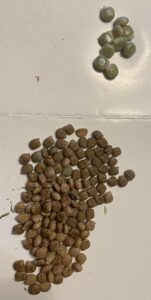
Green and brown seeds.
When extracting the seeds, you may notice most seeds look like a little brown or tan rock. Sometimes you may extract a few green seeds that look more like small peas. Before storing the seeds, allow them to dry in a cool dark place for 24-48 hours. The green seeds will take longer to harden-off since they were less mature. All the seeds should have a hard shell and not sticky before storing. Label the envelope or other storage container you prefer to use and include the date. Bluebonnet seeds are viable for a year or two, with the best germination rate within one year. Store in a cool, dry place until fall.
Start Planting Seeds in Late August
Plant the seeds starting in late August and continue through October for Central Texas areas. Planting them in the heat of summer allows more time for the tough seed coat to wear down. If planting in October, you may need to scarify the seed to increase germination.
Sow directly onto the ground and cover very lightly with soil or gravel. Water in so the seeds don’t blow away, and then let Mother Nature take its course. Bluebonnets don’t like to be disturbed or need much water and will root in shallow soil. Once sown, just forget about them and you’ll begin to see the fruits of your efforts in mid-winter as the plants begin to emerge. Harvesting bluebonnet seeds is a straightforward process once you’ve discovered the brown pod. Follow these steps and you’ll have bluebonnets rewarding you with picture-worthy color year after year. 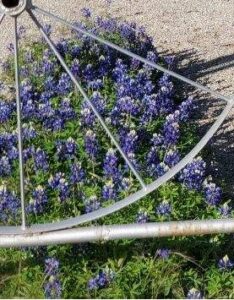
What is a Texas Superstar plant? 
The Texas Superstar® program was created by horticulturists to identify and select plants that can be grown across the state of Texas with high confidence in the quality and reliability of the plant. Selections for the program are based upon observations made at replicated plots and demonstration trials across the state and final selection is made by the Texas Superstar® Executive Board.
Additional Resources
Annual and Perennial Flowers For Austin
About Yvonne Schneider

Yvonne was a 35+year veteran in the computer and information technology industry when she retired and moved from Houston to the Austin area. In 2018, Yvonne certified as a Travis County Texas Master Gardener to follow her passion for gardening and volunteering within the community. She has spent 20+ years enjoying gardening and working with bulbs and perennials. She now tackles the challenges presented by the Austin area wildlife, drought, and limestone soil.
